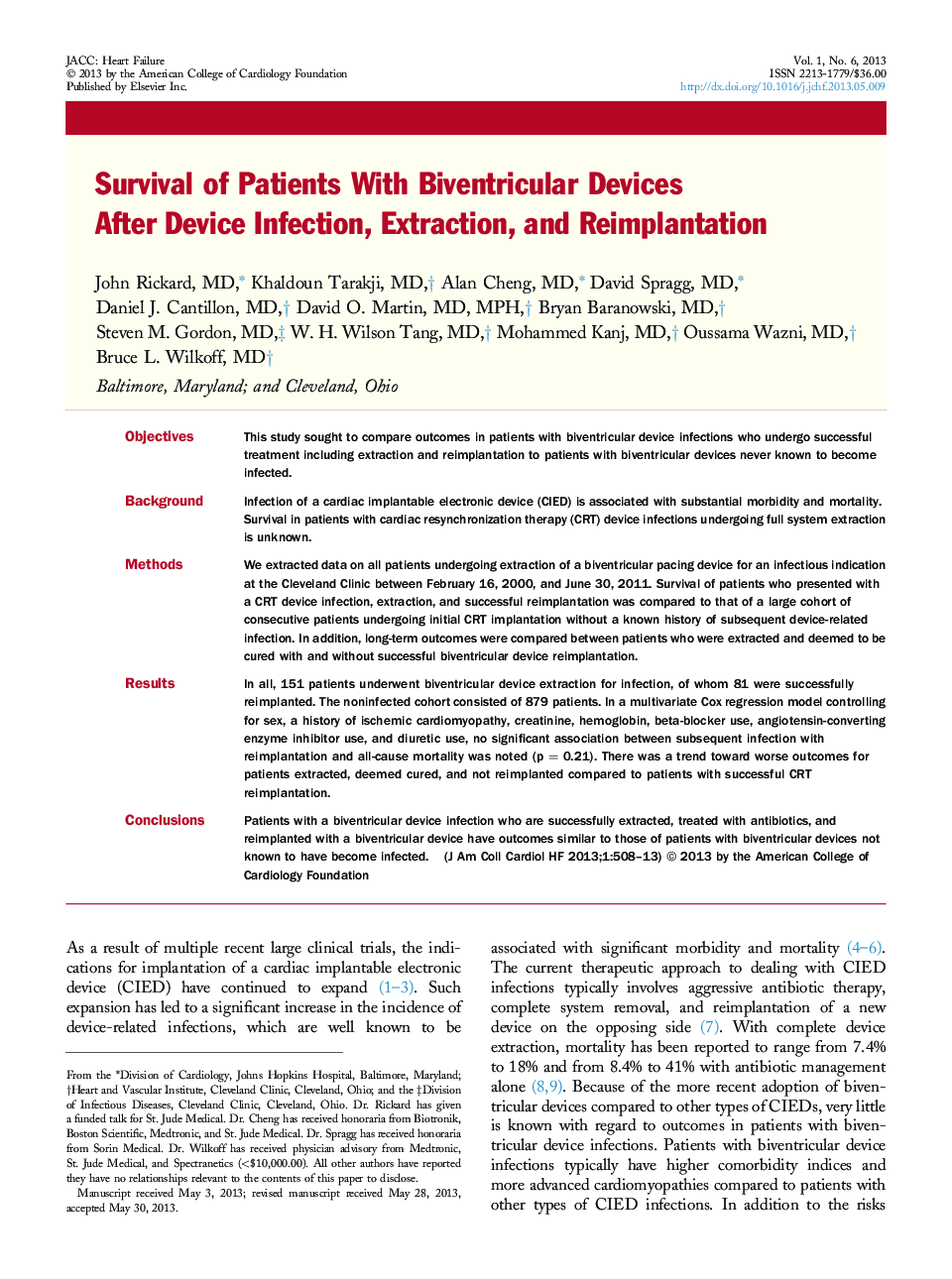| Article ID | Journal | Published Year | Pages | File Type |
|---|---|---|---|---|
| 2942619 | JACC: Heart Failure | 2013 | 6 Pages |
ObjectivesThis study sought to compare outcomes in patients with biventricular device infections who undergo successful treatment including extraction and reimplantation to patients with biventricular devices never known to become infected.BackgroundInfection of a cardiac implantable electronic device (CIED) is associated with substantial morbidity and mortality. Survival in patients with cardiac resynchronization therapy (CRT) device infections undergoing full system extraction is unknown.MethodsWe extracted data on all patients undergoing extraction of a biventricular pacing device for an infectious indication at the Cleveland Clinic between February 16, 2000, and June 30, 2011. Survival of patients who presented with a CRT device infection, extraction, and successful reimplantation was compared to that of a large cohort of consecutive patients undergoing initial CRT implantation without a known history of subsequent device-related infection. In addition, long-term outcomes were compared between patients who were extracted and deemed to be cured with and without successful biventricular device reimplantation.ResultsIn all, 151 patients underwent biventricular device extraction for infection, of whom 81 were successfully reimplanted. The noninfected cohort consisted of 879 patients. In a multivariate Cox regression model controlling for sex, a history of ischemic cardiomyopathy, creatinine, hemoglobin, beta-blocker use, angiotensin-converting enzyme inhibitor use, and diuretic use, no significant association between subsequent infection with reimplantation and all-cause mortality was noted (p = 0.21). There was a trend toward worse outcomes for patients extracted, deemed cured, and not reimplanted compared to patients with successful CRT reimplantation.ConclusionsPatients with a biventricular device infection who are successfully extracted, treated with antibiotics, and reimplanted with a biventricular device have outcomes similar to those of patients with biventricular devices not known to have become infected.
